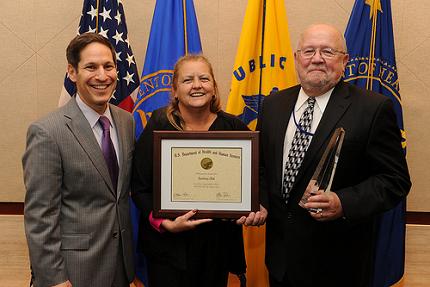Open Innovation at the US Department of Health and Human Services
Published Jan-12-13Breakthrough:
Innovation contest delivers a novel monitoring device to assess the hazards of explosible dust accumulations in underground coal mines.
Company:
US Department of Health and Human Services, United States
The Story:
 The US Department of Health and Human Services (HHS) holds a series of open innovation contests for its employees that could provide a model for other organisations. In particular, those looking to involve their employees in innovation efforts, or that may be considering changing the corporate culture to a more open one as a stepping stone toward engagement with external sources of knowledge.
The US Department of Health and Human Services (HHS) holds a series of open innovation contests for its employees that could provide a model for other organisations. In particular, those looking to involve their employees in innovation efforts, or that may be considering changing the corporate culture to a more open one as a stepping stone toward engagement with external sources of knowledge.The HHSinnovates program was launched in the spring of 2010 and was created as part of HHS’s Open Government efforts to celebrate and encourage innovation by its employees. The overarching aim is to foster a culture of innovation throughout the Department such that it becomes second nature.
Broad Engagement
Twice a year, HHS employees are invited to submit their ideas via an intranet site and the best ones are posted for online voting and comments by the internal HHS community. From this process a number of finalists are selected, and from this small group the overall winner is chosen by the Secretary.
Since the contest started nearly 450 staff-driven innovations have drawn more than 50,000 votes.
For the first time in the competition's history the HHS decided that in 2012 it would ask members of the public to vote on the top innovations - “The People’s Choice”. This is in addition to the Secretary Award.
Open Innovation Winner
More than 18,000 members of the public placed a vote and the winner of the first ever People’s Choice Award was an innovation called 'The Coal Dust Explosibility Meter' (CDEM), a monitoring device that can help prevent coal dust explosions - a serious concern of the mining industry.
These events have been responsible for 64 fatalities and 18 injuries since 2000. The catastrophic mining accidents happen when methane ignitions lift and then ignite the coal dust present in the mines. To prevent their occurrence inert, pulverized rock is added to mine roofs, walls, and floors. This creates an incombustible dust mix.
The current method for determining dangerous dust levels is a lengthy process involving collecting dust samples and sending them to a laboratory to be analysed. The process can take weeks. However, the CDEM can immediately determine whether more rock dust needs to be added to make an area safe.
It is able to distinguish dust particle sizes in its measurements. This is important as the finer the particles the more volatile they are. The laboratory investigations are unable to distinguish particle sizes.
Fail Fast
One of the most interesting aspects of this open innovation contest - in addition to the novel ideas - is one of its guiding philosophies, and that is fail and fail fast. This is a kind of thinking rarely associated with government departments and was discussed by Dr. Thomas Frieden, Director of the US Centers for Disease Control and Prevention (CDC) at the awards ceremony.
“Fail early and fail often so long as we know we’re failing so we can adjust our way of working. Because ultimately we are going to be successful by getting that feedback loop and iteratively improving the effectiveness of our work. Innovation is about continuous improvement.”
Next Story »


